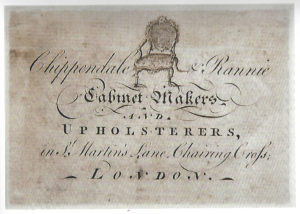
C. 1754 trade card for Chippendale & Rannie, as reprinted in Bowett & Lomax
While it might be argued that the 1754 publication of Chippendale’s Director… was as a promotion of his cabinetmaking business a bit of commercial puffery- albeit an expensive one- that it coincided with the move to much, much larger premises bang in the middle of fashionable St Martin’s Lane begs a singular question- how was Thomas Chippendale able to afford to do both these things at once? It is generally agreed that the capital invested at this point by James Rannie, his business partner, made both possible.
Rannie was an established man of business, or at least with established connections, in Edinburgh and the adjacent port town of Leith. But what was it that drew Rannie to Chippendale and induced him to invest, or gamble really, so heavily on the cabinetmaker’s prospects?
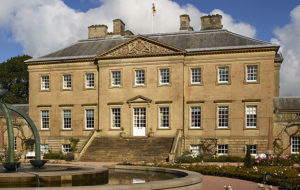
Dumfries House, courtesy Country Life images
Christopher Gilbert concluded that Rannie was convinced the publication of the Director would vault Chippendale to fame and financial success, but it is apparent that the publication and move to St Martin’s Lane happened almost simultaneously. Unless Rannie was possessed of second sight, it seems unlikely the Director was the sole motivating factor. In any event, Rannie was hardly a sleeping partner, and the firm became Chippendale & Rannie, with the larger premises in St Martin’s Lane leased in both their names.
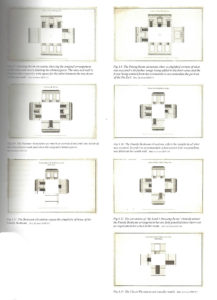
‘Exploded’ plans of the main rooms at Dumfries House, from the Bute archives and reprinted in Simon Green ‘Dumfries House
While Chippendale made use of his Yorkshire roots for commissions, Rannie apparently was sufficiently well connected in Scotland to acquire trade for the business. Interestingly, one of the most significant from this period was what might be termed a walk-in, in the person of William Crichton Dalrymple, the 5th Earl of Dumfries. He visited the premises of Chippendale and Rannie in early 1759, with the object to furnish his new home nearing completion in the southwest of Scotland. Presumably time was of the essence and it appears at his visit Lord Dumfries was possessed of ‘exploded’ plans of the house, and purchased items from Chippendale and Rannie that were either already completed or were part of the business’s standard stock in trade that could be completed quickly. With the exploded plans- showing both the footprint and adjacent walls of the interior- it would have been a relatively easy matter for the firm to superimpose the furniture pieces needed- including side tables and wall mirrors- and determine size, appropriateness, and placement. Lord Dumfries’ considerable furniture order was quickly filled and shipped by Chippendale from London to Scotland in late May, 1759.
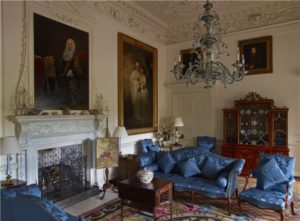
The Drawing Room, Dumfries House- much of a muchness, courtesy of Country Life images
For furniture historians, this particular commission is of importance in that it marks the most significant number of pieces known to have been produced by the workshop directly from patterns contained in the Director. Further, the pieces and their placement have remained largely unchanged and in many cases in situ from the time of their arrival providing an unequaled opportunity for the study of this earlier, rococo period of Chippendale’s production. As a bit of a sidebar, although Lord Dumfries’ use of a plan to determine what to buy and where to put it might have been expedient, the final result was, in my view, not as effective as it might have been. Though the furniture pieces individually are beautifully designed, exquisitely wrought, and wonderfully proportioned in themselves, the overall effect, particularly in the drawing room and small parlour, is of a bit too much furniture and of too large a scale for the spaces intended.
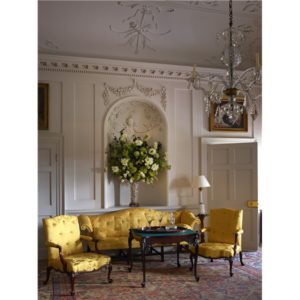
Small parlour, Dumfries House- a welter of legs; courtesy Country Life images
It is surmised that Lord Dumfries must have had some knowledge of and exposure to James Rannie through connections in Edinburgh, and although Dumfries himself was not one of the Scottish subscribers to the Director, it is thought that he was otherwise sufficiently convinced of the fashionabilty and propriety of Chippendale and his designs from his connections with other cognoscenti in matters of taste. It is known that when designing his home Dumfries sought the opinion of the preeminent arbiter of taste Richard Boyle, 3rd Earl of Burlington and it is perhaps through Lord Burlington that Chippendale was recommended. Perhaps. A bit of a conundrum here, as although there exists an early reference to Chippendale by Burlington, Burlington was a classicist and the leading exponent of Palladianism- very much at odds with the natural forms contained in the rococo design of the furniture Chippendale was then producing. The effect of the simultaneous and seemingly disparate influences of Rannie, Chippendale, Burlington, and Lord Dumfries’ architects the Adam brothers might be considered in a future post.
There is general agreement, though, that Dumfries House was the important commission of this period and Rannie played an important part in facilitating it- though precisely how and to what extent remains yet another subject for further study.
Though the how and the why and indeed the when of Rannie’s initial involvement with Chippendale remain open questions, it is apparent that he formed an integral part of the business. The years of Rannie’s direct involvement must have begun well before the publication of the Director in 1754, and it might be surmised that Chippendale’s efforts as a draughtsman were spurred on by the promise of Rannie’s financial help to assist in publication. Though of course the list of subscribers presumes some financial support from them, some named could be purely honorific. Bowett points out that the first edition of the Director was dedicated to the Duke of Northumberland, which dedication did not, it appears, ever result in any financial reward to Chippendale.
What is certain is that Rannie remained involved until his death in 1766. The firm of Chippendale & Rannie was busy, with important commissions including those for Sir Lawrence Dundas and Sir Rowland Winn at Nostell Priory, and also included the issuance of two further editions of the Director. Busy, but perhaps not all that profitable. It is worth noting that, with Rannie’s death in 1766, the settlement of his will required the recovery of his capital in Chippendale & Rannie. This necessitated the liquidation of a substantial amount of the firm’s assets, including timber stocks, leaving Chippendale so short of cash and supplies he was nearly unable to finish larger commissions, telling one customer he had to take smaller jobs for, his words, ‘ready money’, in preference to larger ones. One is left to wonder, moreover, whether Rannie himself had concerns about the ability of the firm to carry on without his business management. His preference was clearly to have his estate withdraw his capital rather than leaving it in place in a business that was, at least ostensibly, a going concern. It interesting that fellow Scot and Rannie protégé Thomas Haig did subsequently become a partner in the firm, which then became Chippendale & Haig, with £2,000 in capital borrowed, Christopher Gilbert tells us, from James Rannie’s widow. Presumably Haig then was, for purposes of financial management, the safe pair of hands that perhaps Thomas Chippendale was not.
